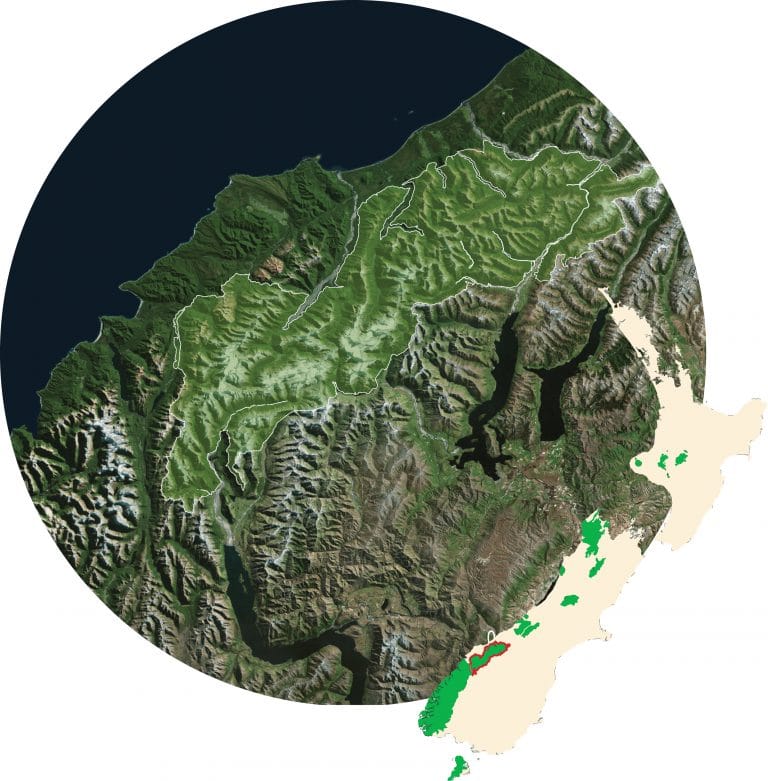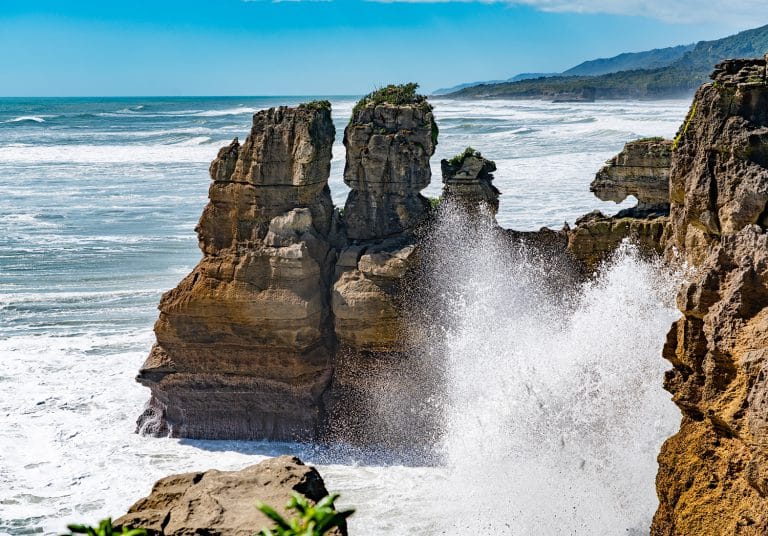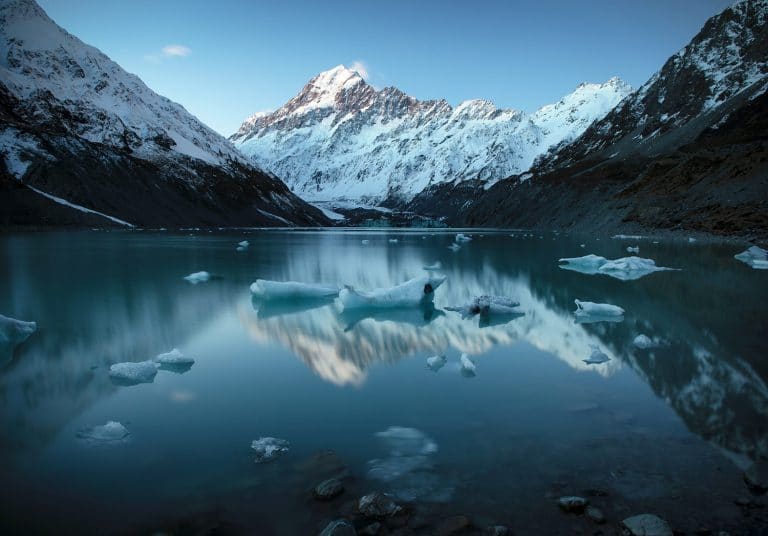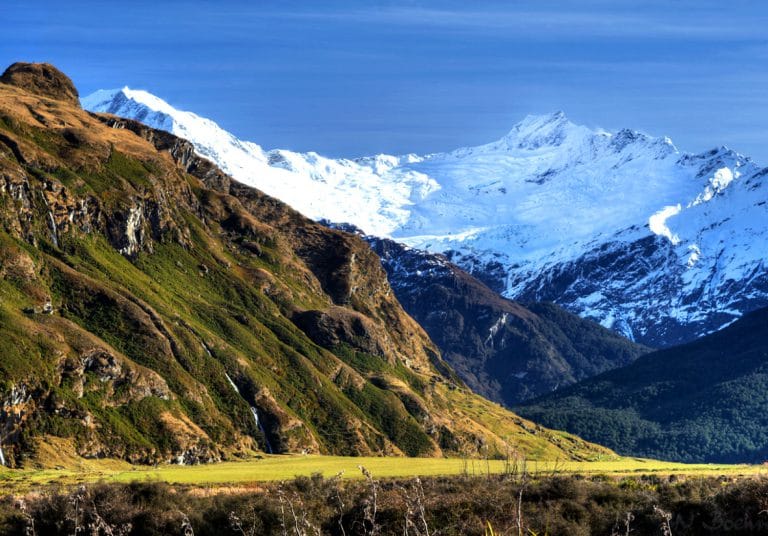Paparoa National Park on the West Coast of New Zealand’s South Island bridges the gap between seascape and landscape. Where the park ends a marine reserve begins, demonstrating the interconnectedness…
Food Gathering
Maori called Mount Aspiring Tititea, or glistening hills of white. This area, including the downstream river valleys, were traditionally important Mahinga Kai or food gathering sites.
John Gilfillan – A Maori camp with men cooking, circa 1860s - Image © National Library of New Zealand




